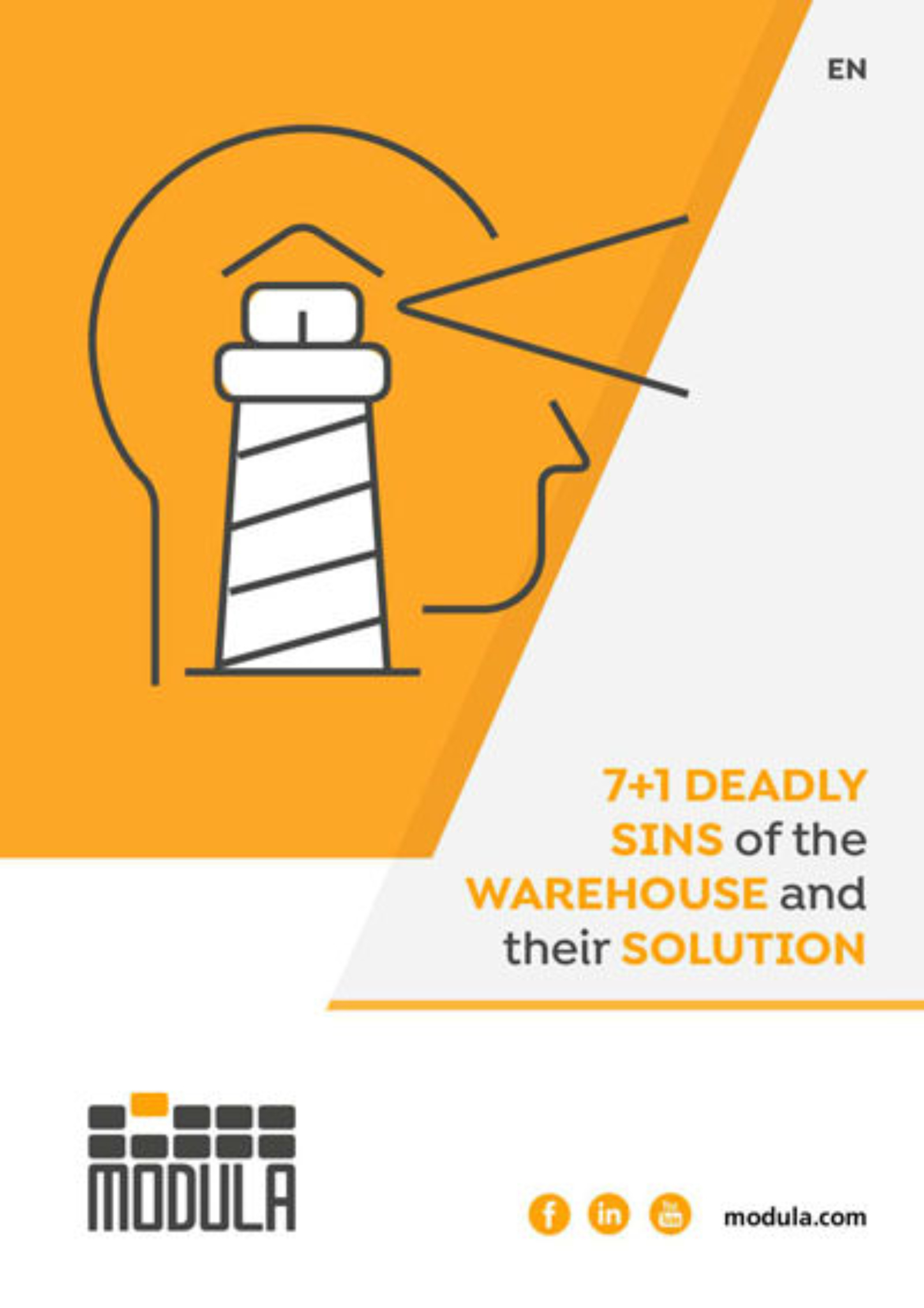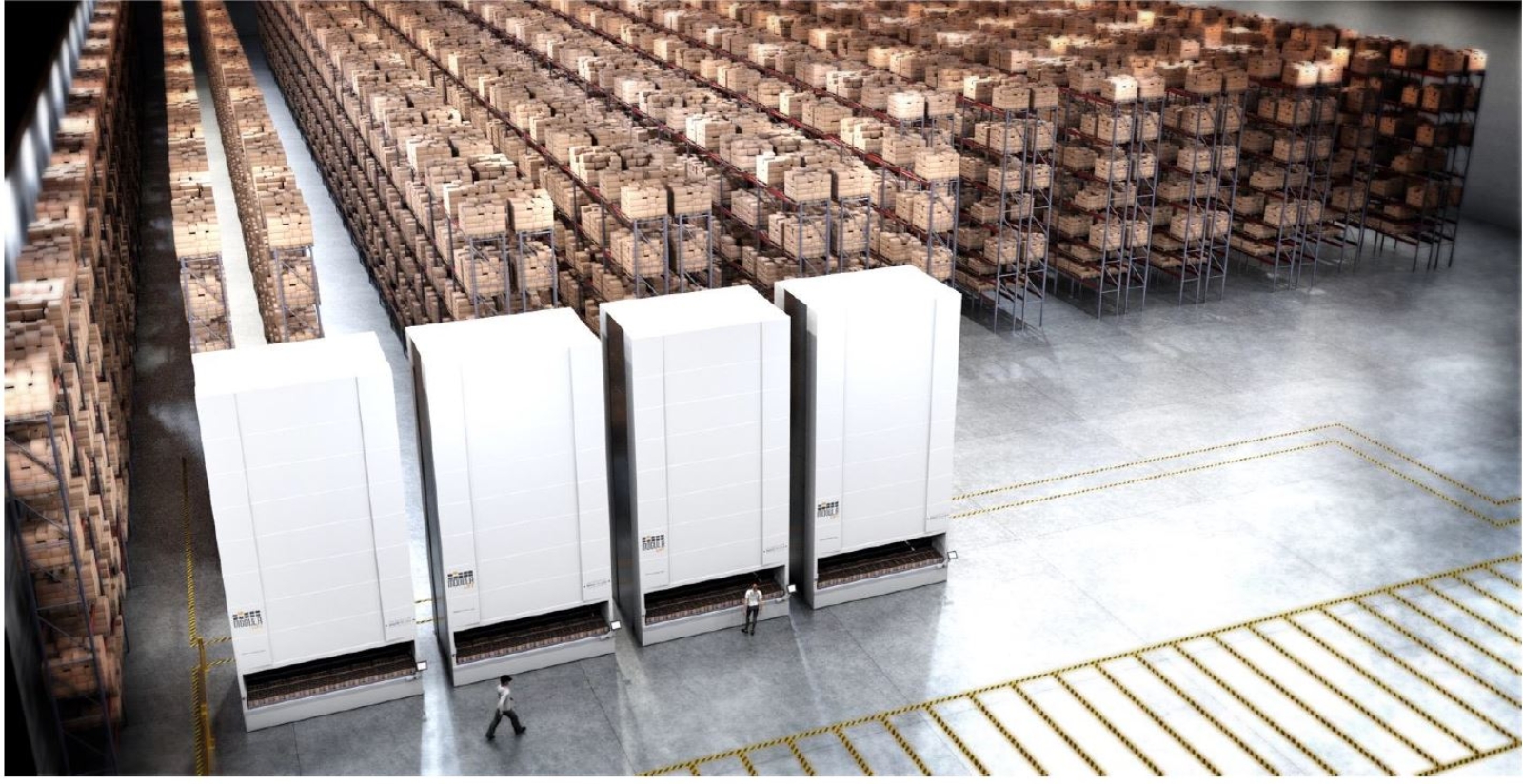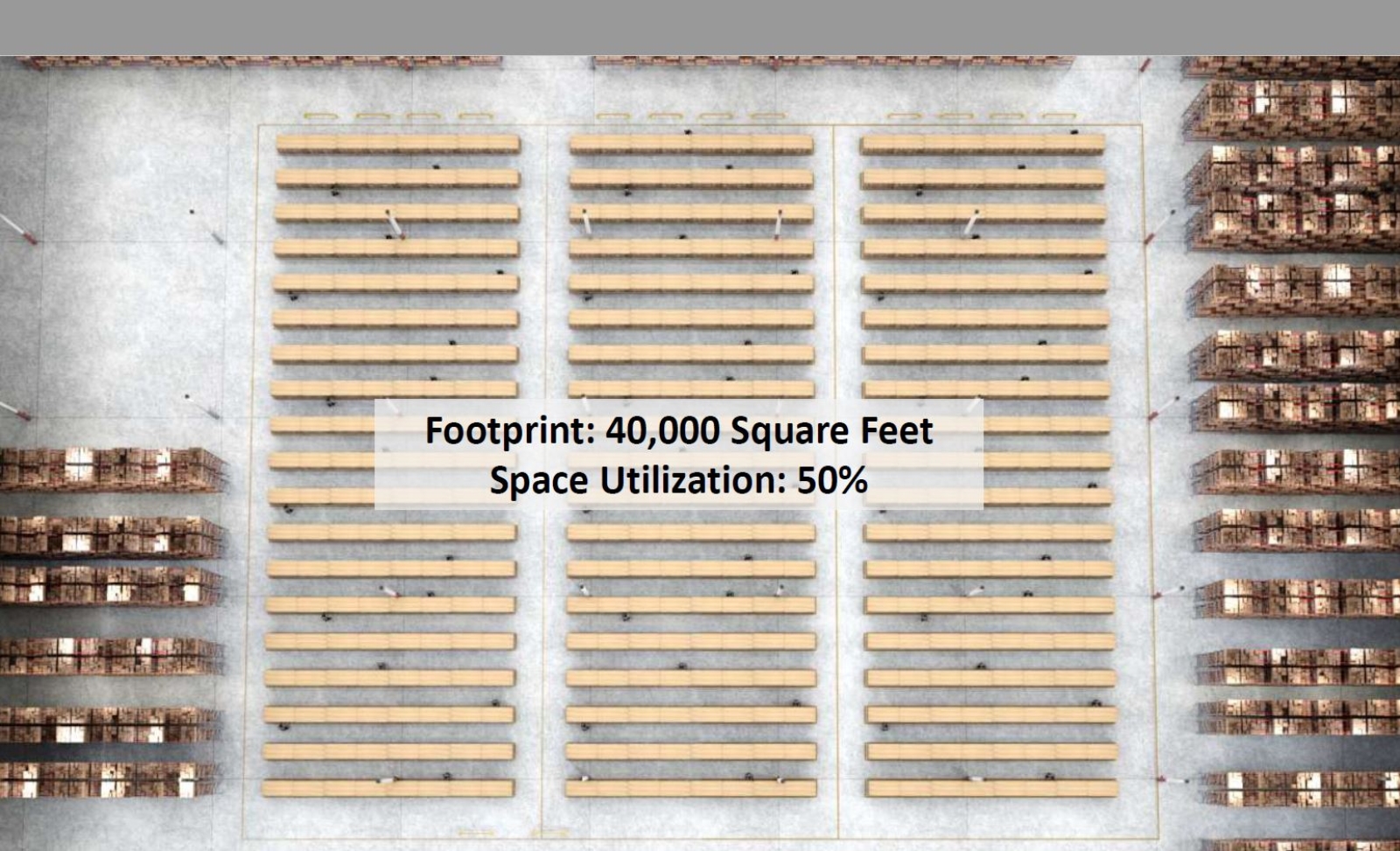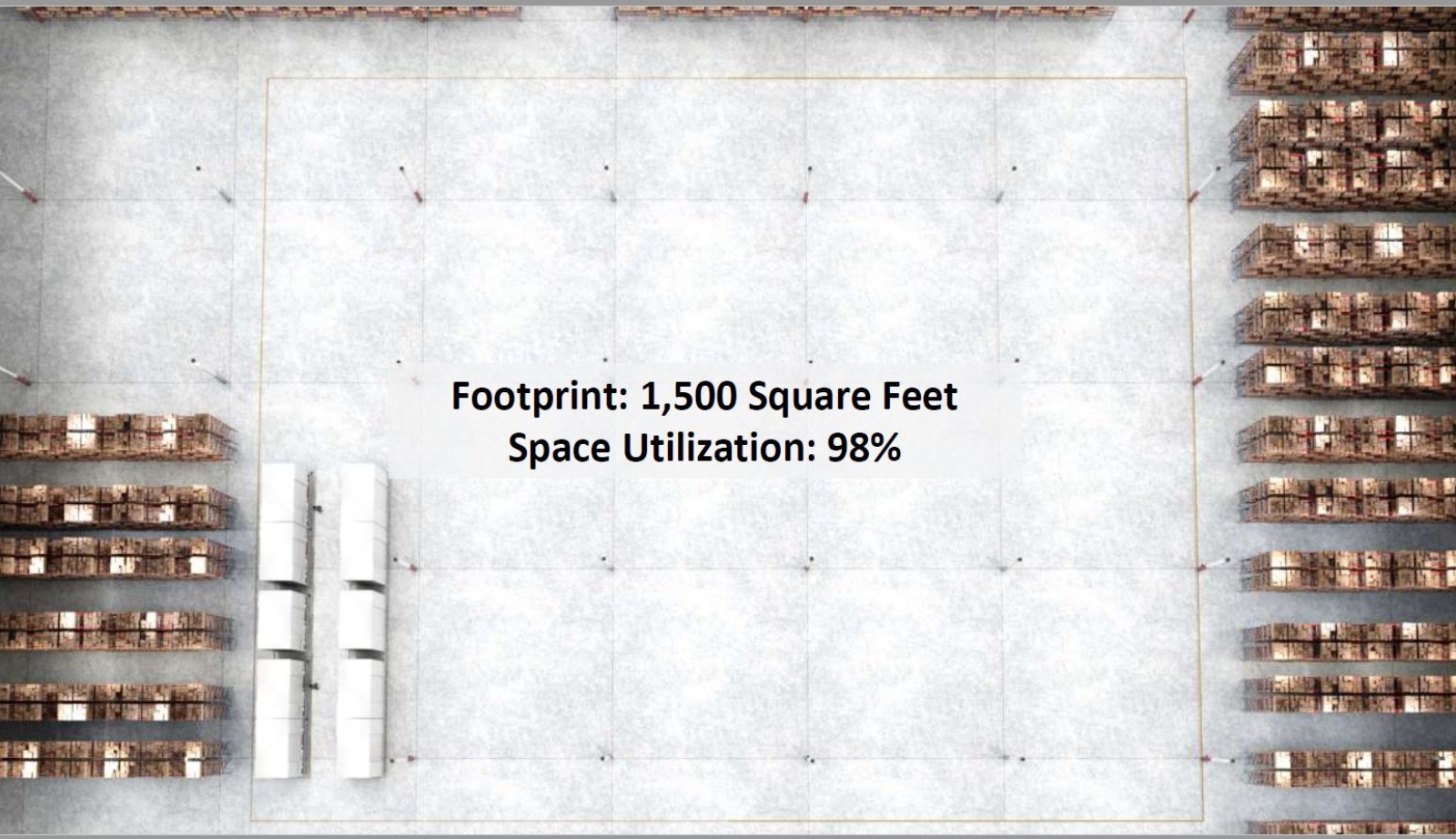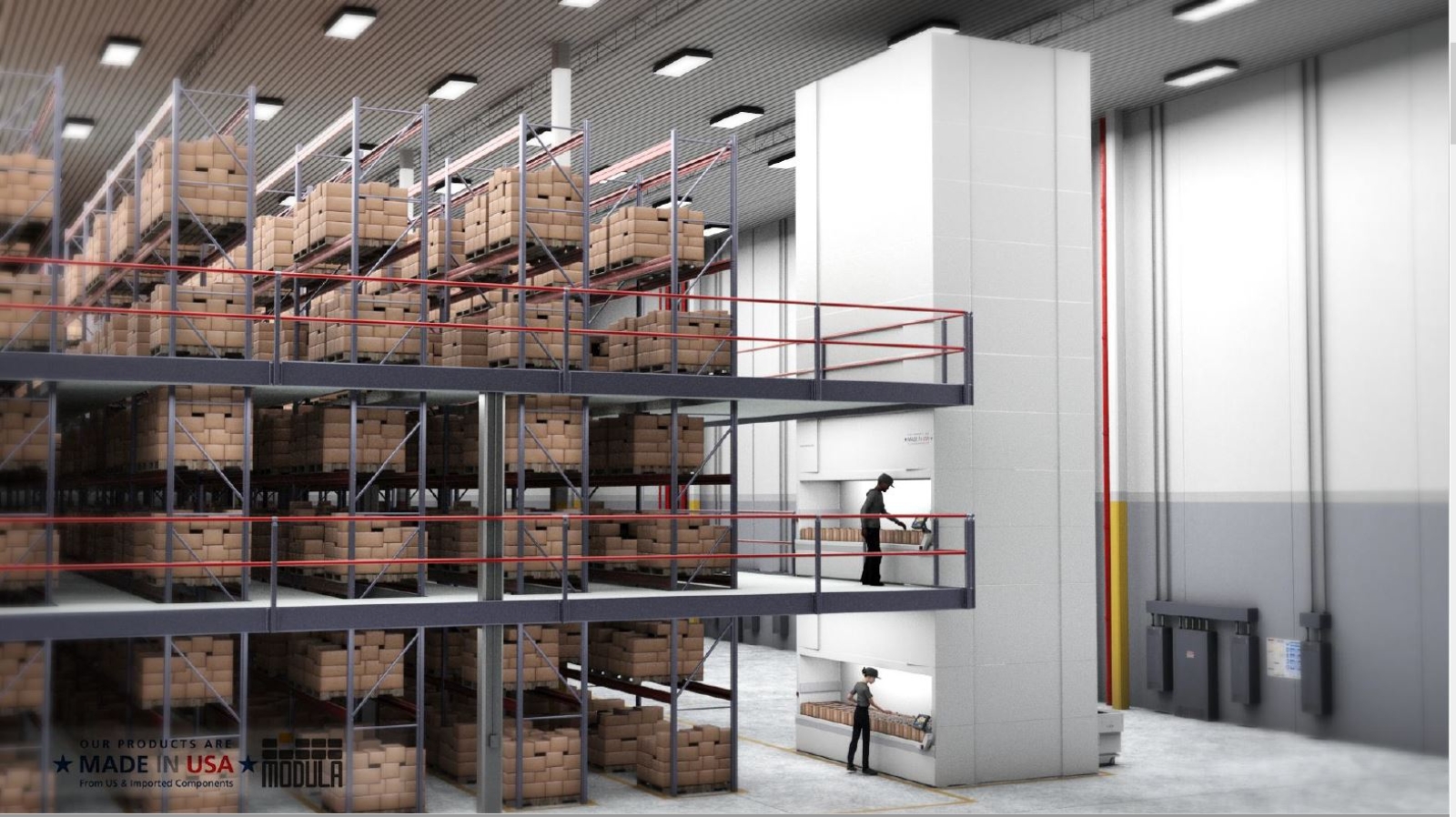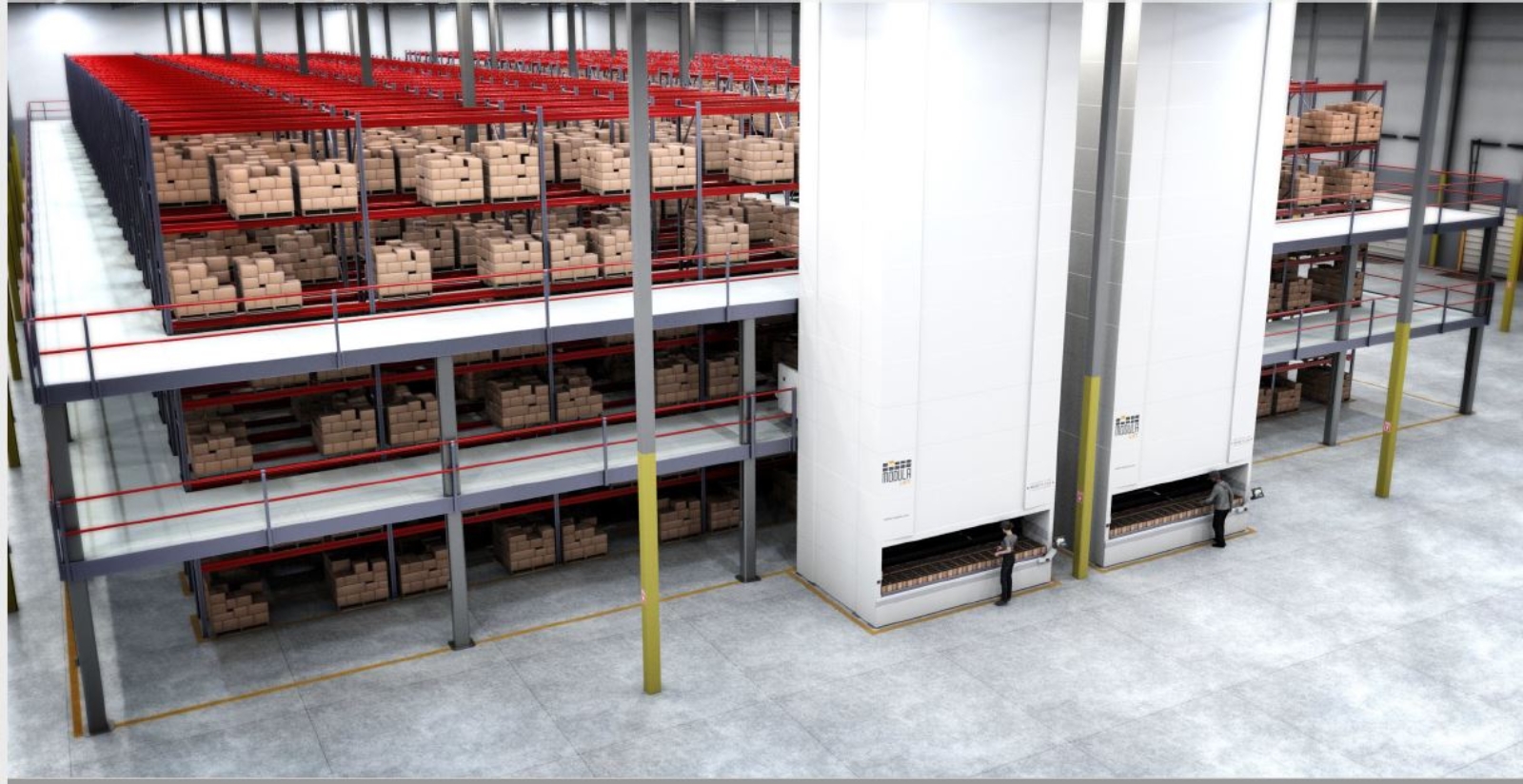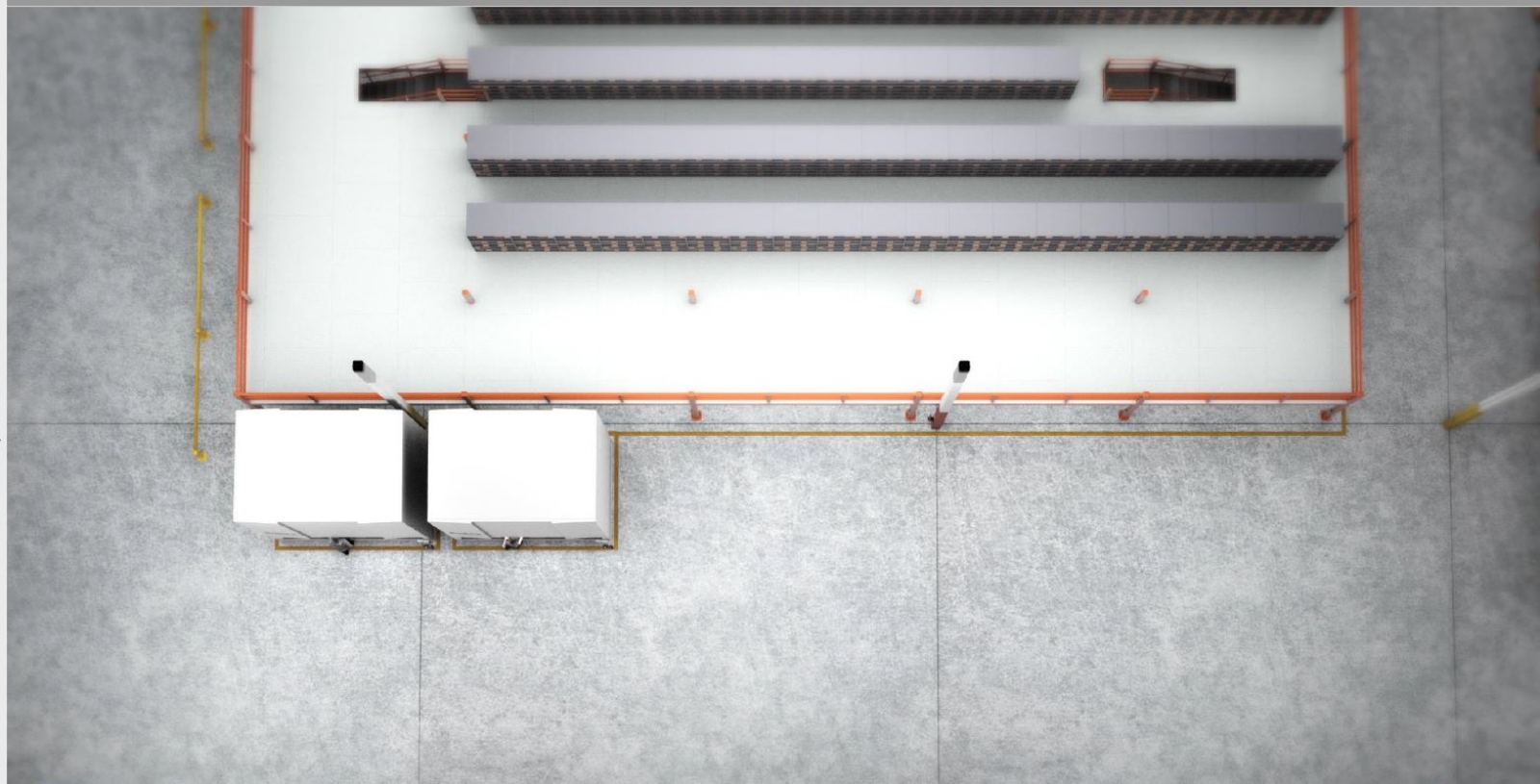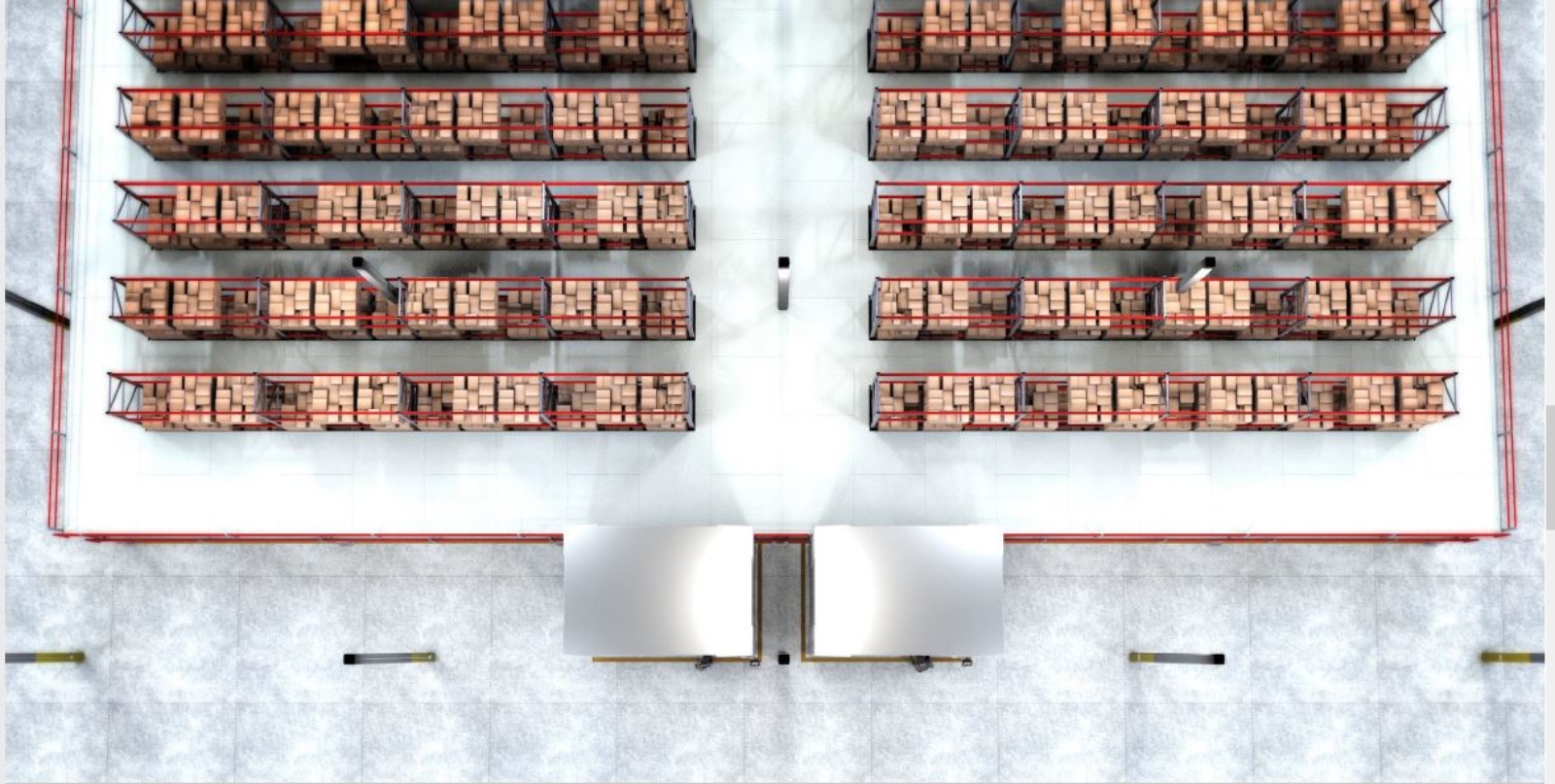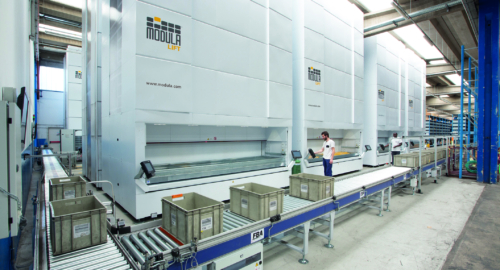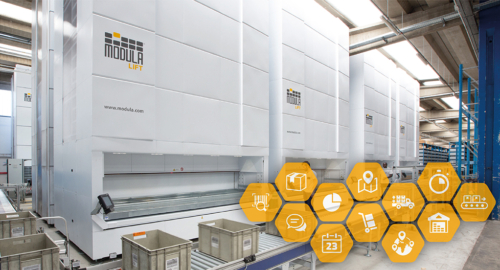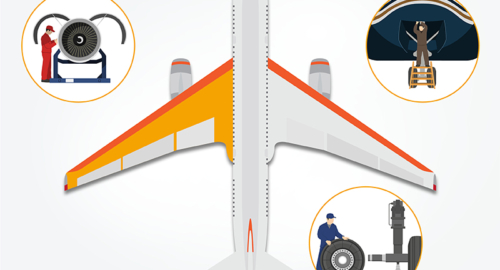Vertical lift modules (VLMs) are a goods-to-person (G2P) automated storage and retrieval system (AS/RS) and have been quickly gaining in popularity in recent years, in distribution centres, in warehouses in various industrial sectors and in 3PL logistics.
3PL operators, whose core business is third-party logistics, draw the most benefit from the advantages resulting from the adoption of automated warehouses, based on a whole series of factors that we will analyse in this article.
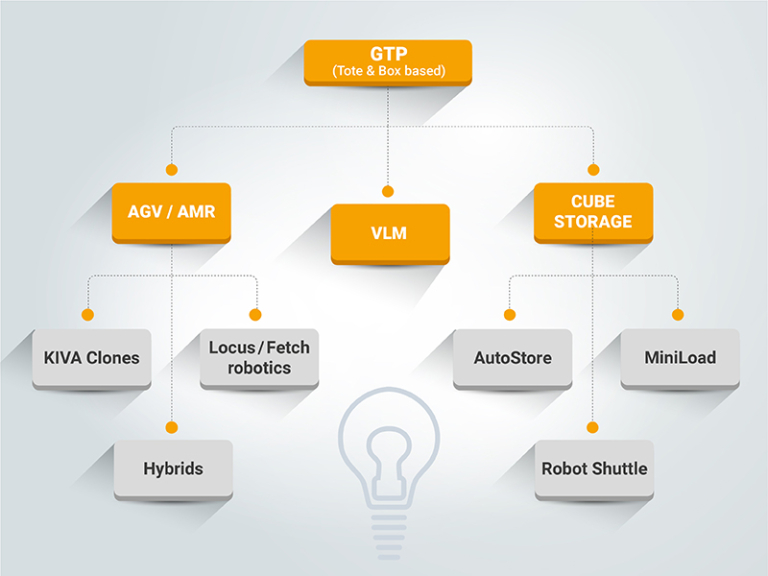
We will therefore look at:
- What is 3PL? Definition and origin
- 3PL in Italy and around the world: latest data and statistics
- PL: its broadest meaning and five classifications (1PL, 2PL, 3PL, 4PL, 5PL)
- Which partner provides 3PL services and what are their characteristics?
- Which companies/sectors can adopt 3PL?
- Benefits of 3PL for user companies
- Benefits of 3PL for operators and professionals
- 3PL: role of the supply chain
- 3PL for physical companies and e-commerce: are there any differences?
- How to launch 3PL management in a business: prerequisites
- 3PL: modular and scalable goods management solutions that adapt over time
- 3PL in vertical lift modules and horizontal carousels: a new context, specific requirements, new advantages
- Automated warehouses as a solution to increase storage capacity for 3PL
- Modula and its 3PL solutions
- 3PL and WMS Modula software
- Total cost of ownership (TCO) and calculating ROI in 3PL
- 3PL and logistics operator management
- Considering automated warehouses for your 3PL provider? Contact us for further information
What is 3PL? Definition and origin
Third-party logistics (3PL) is the outsourcing of logistics operations to an integrated logistics service provider. A 3PL operator therefore provides their goods handling, storage and distribution services as a perfect fit into the client company’s supply chain.
The establishment of companies that provide 3PL services originates in the increasing complexity and difficulty of internal – and efficient – management of logistics 4.0 that meets the needs of today’s clients, as well as those resulting from fluctuations and changes in the market.
To date, this has been companies’ main reason for turning to partners in 3PL.
3PL in Italy and around the world: latest data and statistics
To foster an understanding of the crucial role the third-party logistics market is expected to play in the near future, and of how its growth will be constant, consider that a study by Straits Research predicts global turnover of USD 2018.22 billion by 2030.
What about in Italy? This country doesn’t lag behind and the growth figures are in line with the international trend in third-party logistics, with predicted turnover of EUR 92 billion in 2022, a 2.8% increase year-on-year (“Gino Marchet” Contract Logistics).
As mentioned above, the reasons for this growth lie in the increasing complexity of logistics, which has simultaneously resulted in the growth of various types of logistics operators, in turn classified based on their duties at work. However, the impact of the Covid-19 pandemic must not be underestimated; it has led more and more companies to reconsider e-commerce as a strategic sales tool. Of course, the growth of this channel has also resulted in exponential growth for logistics partners.
PL: its broadest meaning and five classifications
Third-party logistics operators are classified according to the term ‘-party logistics’ (PL), preceded by a number indicating the services offered and therefore the level of outsourcing. Let’s have a look at the five classifications, which represent the evolution of logistics:
- 1PL – first-party logistics – refers to when a manufacturing company deals with logistics for its products in-house, without the involvement of third parties for any service.
- 2PL – second-party logistics – refers to when a manufacturing company that operates in a very large geographical area realizes that it can no longer manage the logistics aspect in terms of transport and therefore decides to rely on an external shipping company.
- 3PL – third-party logistics – refers to when a manufacturing company decides to entrust all its logistics (both storage and distribution) to an external partner. This is therefore true logistics outsourcing, where the 3PL partner becomes an invisible intermediary between the company and its end customers, leaving the task of managing orders and invoices to the business.
- 4PL – the result of the complexity of the modern market, fourth-party logistics refers to providers that offer complete consulting services on logistics management, including the identification of 3PL partners. Therefore, 4PL does not entail the logistics infrastructure, but rather deals with optimising the supply chain.
- 5PL – fifth-party logistics – refers to providers of both 3PL and 4PL services.
Which partner provides 3PL services and what are their characteristics?
A partner offering 3PL services must be selected very carefully, focusing on features that highlight its reliability and adherence to the needs of its business. Making a poor choice of partner can damage your reputation with clients and disrupt your entire supply chain.
Which characteristics should you pay attention to?
- Infrastructure adapted to meet the requirements of your business, which can adapt to the needs of the end client and can also grow in terms of inventory volume alongside
- Positive experience in handling your product
- Competitive pricing for the nature of your product
- Excellent reputation
- Flexibility to adapt to any seasonal peaks or emergencies
- Adoption of automation technologies for warehouse management and order preparation
Which companies/sectors can adopt 3PL?
The decision to rely on a 3PL partner does not depend on the sector, but rather is closely linked to the degree of control you want to maintain over your supply chain and with the convenience of outsourcing in economic terms.
Undoubtedly, it is a suitable choice for high-growth companies with insufficient logistics infrastructure and staff to support this growth independently. This was the case, for example, during the Covid-19 pandemic, when e-commerce companies saw their turnover increase exponentially and suddenly. Again according to the “Gino Marchet” Contract Logistics Observatory, the boom in e-commerce during the pandemic has resulted in the value of the sector rising to 20% of turnover for approximately 60% of logistics operators.
It can therefore be said that any company in any product sector can decide to rely on a 3PL provider; all they need to do is identify the right partner that offers services that suit their product.
Benefits of 3PL for user companies
There are many advantages for contractors to rely on a 3PL partner, which are set out below.
- A 3PL company has the infrastructure, expertise and staff required for efficient logistics management. For a contractor, these factors would represent a huge cost, both economically and in terms of time spent on staff training.
- A 3PL company guarantees flexible, scalable logistics that can adapt to fluctuations in the market.
- A 3PL company guarantees reduced delivery times and costs, resulting in improved client satisfaction.
- A 3PL company provides the most advanced technological tools to optimise routes and accurately monitor goods.
- A 3PL company makes it easier to expand into foreign markets, making it unnecessary for the contractor to have their own infrastructure.
- The contractor can then focus on their core business and strategic objectives to remain competitive, without needing to allocate resources to the operational aspect of logistics.
Benefits of 3PL for operators and professionals
Why should logistics operators now decide to offer 3PL services? It can be easy to work out some of the reasons based on the above, i.e. strong growth in demand for specialist integrated logistics services from companies that, given the complexity of the field, are looking for partners to which they can outsource this phase of the supply chain.
Compared to how things used to be, a 3PL operator approaching the end of their collaboration with a contractor will therefore have no trouble finding new companies to which they can offer their services.
The development of on-demand warehousing or flexible storage is presenting new business opportunities for short-term outsourcing contracts.
3PL: role of the supply chain
At the moment, logistics is assuming an increasingly central role within the supply chain, constituting a central competitive lever. A satisfactory shopping experience cannot be separated from efficient logistics and delivery management.
Companies are therefore looking for a 3PL partner that can offer high-performance, streamlined and high value-added logistics serviceswith in-house expertise in technology.
In this context, 3PL operators need to deal with four major challenges to remain competitive in the current market (and hence meet the needs of client companies):
Proximity
Logistics operators must be able to offer a widespread presence, to guarantee efficient integration of IT systems and improved business relationships.
Flexibility
As a result of adapting to an ever-changing environment, 3PL operators are used to managing uncertainty to meet the needs of multiple clients at the same time. This translates into genuine added value for all businesses where service in real time is an imperative.
Last-mile delivery
The actual delivery of the item to the client, to their home, to a retailer or using click and collect. The complex architecture of last-mile delivery must be borne in mind by 3PL operators to offer an efficient logistics service that responds to the requirements of all stakeholders.
The need for software and automation
To increase profitability and ensure the durability of their businesses over time, 3PL partners must constantly optimise and adapt their operations, which is only possible with the support of automation and WMS software. The supply chain is also becoming more and more high-tech and digital, and contractors are seeking 3PL partners who can easily fit into a digitalised context.
3PL for physical companies and e-commerce: are there any differences?
The decision to outsource logistics and ensure fast and punctual deliveries is involving ever-increasing numbers of both companies and sectors. Depending on the client company’s sector and business model, however, requirements are changing and differences are becoming clear.
This is the case, for example, in e-commerce, which is more affected by fluctuations due to seasonality and promotions than other fields; it therefore requires a highly dynamic 3PL service and flexible storage to respond to spikes in demand. For an e-commerce business, the opportunity to manage reverse logistics (returns) is also essential.
Another case is the omni-channel context, where companies choose to operate with both a physical presence and an online store, by outsourcing this aspect to a 3PL partner with expertise in logistics for e-commerce.
Conversely, more traditional and non-seasonal sectors such as grocers and food retailers rely on conventional 3PL partners, on medium- and long-term contracts.
How to launch 3PL management in a business: prerequisites
Outsourcing logistics management to a 3PL operator is a step that must be carefully designed and must be subjected to a thorough internal audit to evaluate the costs, timing and overall impact of this choice. An audit also provides an appreciation of the needs of your company and enables you to identify the prerequisites for entering into a profitable partnership with a 3PL operator.
These prerequisites definitely include the need for a WMS system, offering real-time communication between the company and the 3PL partner to achieve transparent, punctual and just-in-time order and stock management.
The exchange of information is essential for the proper management of the supply chain and can ensure fluid integration between customers and suppliers; another fundamental condition is therefore the 3PL partner’s access to the technology now considered essential.
3PL: modular and scalable goods management solutions that adapt over time
Of course, 3PL partners offer their clients a highly scalable and modular logistics service, using their warehouse infrastructure. As their business grows, a 3PL operator can increase their volumes in terms of storage, delivery rate and hence their number of deliveries.
This ability to adapt over time among 3PL operators is only genuine and sustainable if it is based on a system of SKU management solutions as modular (revolving around the strategies and inventory management model selected by the client) as it is scalable. Shelving models specially designed for third-party logistics are therefore necessary, for their expandability and adaptability over time.
Adaptability (to new products, new volumes and new scenarios) is enhanced by the adoption of technologies to automate processes and reorganise work based on data.
3PL in vertical lift modules and horizontal carousels: a new context, specific requirements, new advantages
Until recently, third-party logistics operators were not attracted to warehouse automation solutions, such as vertical lift modules and horizontal carousels, for several reasons:
- Capital-intensive investment
- Contractor agreements that were typically too short to recoup the investment
- Lack of flexibility of automated systems in terms of relocation
We now find ourselves in a new context, where investing in vertical lift modules and horizontal carousels not only offers advantages, but also increases the competitiveness of the 3PL provider by giving it the ability to respond to new requirements.
Vertical lift modules and horizontal carousels offer the ability to deal with spikes in demand accurately and on time, with no errors and without having to hire more staff. They can also mitigate a limited workforce. In terms of investment, however, these solutions can be adopted gradually and investing in them therefore poses less risk.
Automated warehouses as a solution to increase storage capacity for 3PL
Another boon of automated warehouses in 3PL is the option to optimise storage capacity. Space is multiplied with no increase in footprint, given that automated warehouses maximise that space, even vertically, with savings of up to 90% of the surface area available.
The most innovative automated warehouses are also load-bearing, meaning that they have an integrated and automatic system for controlling unit height and weight to make the most of the internal space based on the product stored.
An automated warehouse has clear effects on possible savings in rent, heating and cooling costs (less space for the same storage capacity).
Reorganising the warehouse to save space equates to the ability to serve new customers, then to expand your customer network, increase the number of SKUs handled and consequently produce greater profits (in a sector where margins are reducing, this is a huge opportunity). Expanding vertically instead of horizontally is an advantage even in countries (such as the USA) where property costs are constantly rising.
Modula and its 3PL solutions
Modula offers solutions for vertical lift modules, horizontal carousels and picking that on the one hand can fully meet the needs of a 3PL provider operating in the current context, and on the other can boost all the advantages of third-party logistics.
PICKING SPEED
This aspect is definitely enhanced by adopting a Modula and its picking solutions, given that goods-to-person results in drastic cuts to time the operator wastes looking for individual SKUs to make up the order. Picking throughput improves further most of all with automated horizontal carousels such as the Modula HC.
PRECISION
An automated warehouse means fewer steps for operators to take, each of which represents a possible opportunity for error. Automation ensures greater precision and therefore fewer returns to handle.
FLEXIBILITY
Modula automated warehouses, both vertical and horizontal, are highly modular and can quickly be adapted to handle new products, sudden increases or reductions in inventory; above all, however, they can be used to store completely heterogeneous materials (e.g. both a pen and a pair of skis) with no need for bins as in other automatic technologies.
The trays can also be compartmentalized as you wish, depending on your requirements. But not only that, the warehouse can also be moved elsewhere and can be relocated to other environments without posing any problem, unlike other technologies.
Robotic integrations can be easily added, to meet new needs with no interruption to workflows, as a result of the use of WMS software.
EASE OF USE
The perfect entry-level technology to approach automation for its high scalability, meaning it can gradually grow in line with the company’s needs.
PLUG & PLAY SOLUTION
Implementation timing for automated vertical warehouses is very fast, in terms of both lead time (especially when compared to other technologies) and operations.
3PL and WMS Modula software
Several mentions have already been made of a 3PL provider’s need for WMS software for warehouse management, as a decisive factor in whether a company is chosen as a partner in the current climate.
Modula WMS is the ideal solution to manage Modula automated vertical lift modules and horizontal carousels, but can also be fully integrated to manage a traditional static warehouse. The simple and intuitive PC interface offers a real-time overview for warehouse management, while integration with the most popular ERPs makes it quick and easy to adopt for constant exchange of information between systems.
Total cost of ownership (TCO) and calculating ROI in 3PL
When making an investment, there is no point in denying that concepts such as ROI and TCO must be borne in mind. This is also the case for 3PL providers who decide to invest in an automatic warehouse, who until recently considered these concepts a deterrent to the adoption of automated logistics solutions.
Things have changed now: the flexibility, modularity and adaptability of automated warehouse systems have made this solution profitable in the long term, partly as a result of improved use of storage space, higher picking speed and scheduled maintenance to avoid downtime.
To serve certain fields such as the pharmaceutical, food, chemicals or electronics industries, the adoption of automatic warehouses (e.g. Modula Climate Control and Modula Clean Room) is the right way to comply with regulations, to guarantee the safety of SKUs, and to maintain suitable climate conditions . They are therefore an entirely reasonable investment.
3PL and logistics operator management
Even for 3PL partners, the difficulty of attracting and retaining a skilled workforce is now an issue that requires attention. Adopting Modula automated warehouses compensates for a lack of staff and also represents a boon in these terms, for how it:
- Reduces the number of routine, tiring actions for operators
- Facilitates picking operations (the goods are delivered to the operator in a fully ergonomic position)
- Staff can focus on value-added operations (this improves the attractiveness of the task type)
Conversely, an automated warehouse where robotic solutions are also adopted requires fewer people to operate at full capacity, with a considerable reduction in long-term costs.
Considering automated warehouses for your 3PL provider? Contact us for further information
This extensive analysis has explained 3PL as it is today, the requirements to remain competitive in the current market, and what to offer to attract clients.
Automated warehouses, like Modula’s, can boost all the benefits offered by a 3PL provider and can be a scalable investment in the short term. If you’re looking for personalised advice tailored to your needs, contact us.
7+1 Deadly Sins of the Warehouse
